
Alban Towers is an apartment building on Massachusetts Avenue in Northwest Washington, D.C. It is listed in the National Register of Historic Places, and is considered to be one of the best examples of Gothic Revival architecture in Washington.
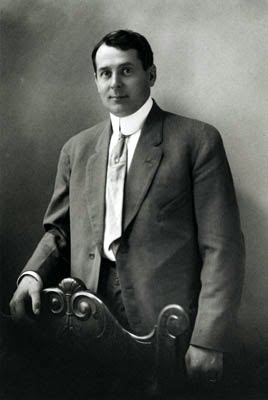
Harry Wardman was a real estate developer in Washington, D.C. during the early 20th century whose developments included landmark hotels, luxury apartment buildings, and many rowhouses. When he died in 1938, one-tenth of the residents of Washington were said to live in a Wardman-built home.
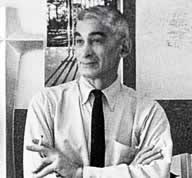
Charles M. Goodman was an American architect who made a name for his modern designs in suburban Washington, D.C., after World War II. While his work has a regional feel, he ignored the colonial revival look so popular in Virginia. Goodman was quoted in the 1968 survey book Architecture in Virginia as saying that he aimed to "get away from straight historical reproduction."

The Eagles Auditorium Building is a seven-story historic theatre and apartment building in Seattle, Washington. Located at 1416 Seventh Avenue, at the corner of Seventh and Union Street, the Eagles Auditorium building has been the home to ACT Theatre since 1996. It was listed on the National Register of Historic Places (NRHP) on July 14, 1983. has two stages, a cabaret, and 44 residential apartments. From the outset, the building was also in part an apartment building, originally under the name Senator Apartments: the four-story grand ballroom was surrounded on three sides by apartments. with many of the apartment buildings located near streetcar lines. The current configuration of the building, under the official name Kreielsheimer Place, has two stages, a cabaret, and 44 residential apartments.
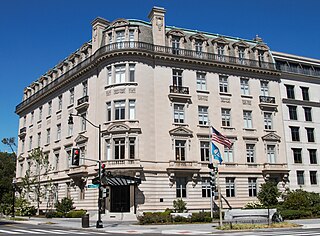
McCormick Apartments, also known as Andrew Mellon Building, Mellon Apartment, or 1785 Massachusetts Avenue Northwest, is a landmark apartment building on Embassy Row in Washington, D.C., whose inhabitants once included Andrew W. Mellon. It is the home of the American Enterprise Institute.
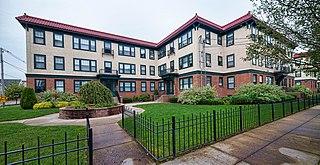
The Ontario Apartments are an historic apartment complex located at 25-31 and 37-41 Ontario Street in Providence, Rhode Island. The apartments were designed by Page & Page, and built in 1925 and 1927 by Harry Soren in a Mission/Spanish Revival style. The apartments consist of two three-story, flat-roofed, wood-framed buildings. The building at 25-31 Ontario Street was built in 1925, and forms a U-shape. 37-41 Ontario Street is to the west, is identical in detail but configured differently.

The Kennedy–Warren is a historic eleven-story apartment house in Washington, D.C. It is located at 3131–3133 Connecticut Avenue, N.W. between the Cleveland Park and Woodley Park neighborhoods. The Art Deco building overlooks the National Zoological Park and Klingle Valley Park, which is near the Art Deco Klingle Valley Bridge. The original main building was built between 1930 and 1931 with 210 apartments.
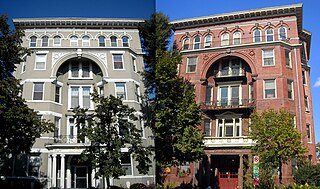
The Gladstone and Hawarden Apartment Buildings are historic twin buildings located in the Logan Circle neighborhood of Washington, D.C. Built in 1900 and 1901, the Gladstone and Hawarden are early examples of middle class apartment buildings in the city. They were designed in the Romanesque Revival architectural style by prominent local architect George S. Cooper. The buildings, since converted into condominiums and a housing cooperative, were added to the National Register of Historic Places (NRHP) in 1994.
Benjamin Stanley Simmons was an American architect.
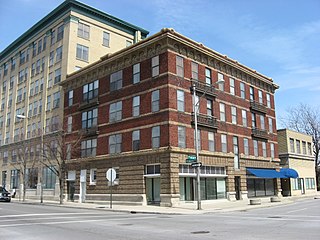
The Barr Hotel is a historic hotel on the eastern side of downtown Lima, Ohio, United States. Built in 1914, the Neoclassical hotel occupies the northeastern corner of the intersection of High and Union Streets.
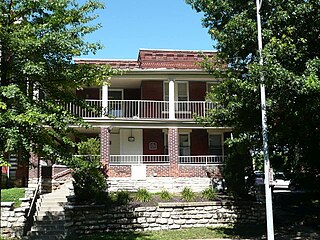
The Kessler Apartments in Kansas City, Missouri were built in 1925. They were listed on the National Register of Historic Places on October 22, 2002 as part of a group of buildings on the north end of Paseo Boulevard.
Martin Luther Hampton was an architect in Florida. After studying at the Columbia University in New York he settled in 1914 in Miami. Many of his buildings are listed on the National Register of Historic Places.

The San Marco is a historic Renaissance Revival apartment building in Downtown, Spokane, Washington that was built in 1904. It was designed by architect Albert Held. San Marco was listed on the U.S. National Register of Historic Places in 1987. It is also listed on the NRHP as a contributing property in the Riverside Avenue Historic District.

The Washington Heights Historic District is located in the Adams Morgan neighborhood of Washington, D.C. The historic district includes 347 contributing properties that date from 1891-1950. It was listed on the National Register of Historic Places in 2006.
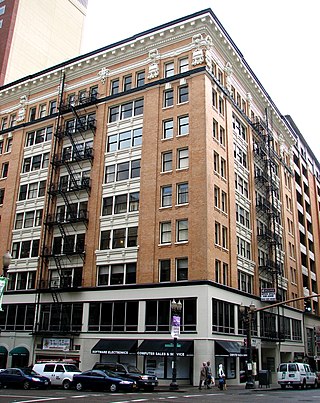
Carl L. Linde was an American architect based in the Pacific Northwest of the United States, particularly in Portland, Oregon. Several of his works are listed on the National Register of Historic Places.

Mount Vernon Triangle is a neighborhood and community improvement district in the northwest quadrant of Washington, D.C. The neighborhood is located adjacent to Mount Vernon Square. Originally a working-class neighborhood established in the 19th century, present-day Mount Vernon Triangle experienced a decline in the mid-20th century as it transitioned from residential to commercial and industrial use.

Appleton Prentiss Clark Jr. was an American architect from Washington, D.C. During his 60-year career, Clark was responsible for designing hundreds of buildings in the Washington area, including homes, hotels, churches, apartments and commercial properties. He is considered one of the city's most prominent and influential architects from the late 19th and early 20th centuries. Many of his designs are now listed on the National Register of Historic Places (NRHP).
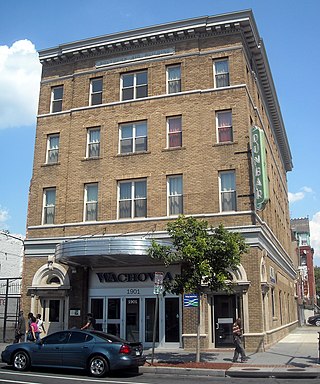
Isaiah T. Hatton (1883–1921) was an architect in the United States known for his designs of buildings for his fellow African Americans. Several are listed on the National Register of Historic Places.

Robert O. Scholz (1895–1978) was an American architect from Washington, D.C., who is considered one of the city's most important Art Deco designers. A native of New York City, his German parents later moved to Chicago, where he studied at the Armour Institute. Scholz briefly served during World War I before moving to Washington, D.C. He worked as an engineer and draftsman before starting his own architectural firm in 1922.


















